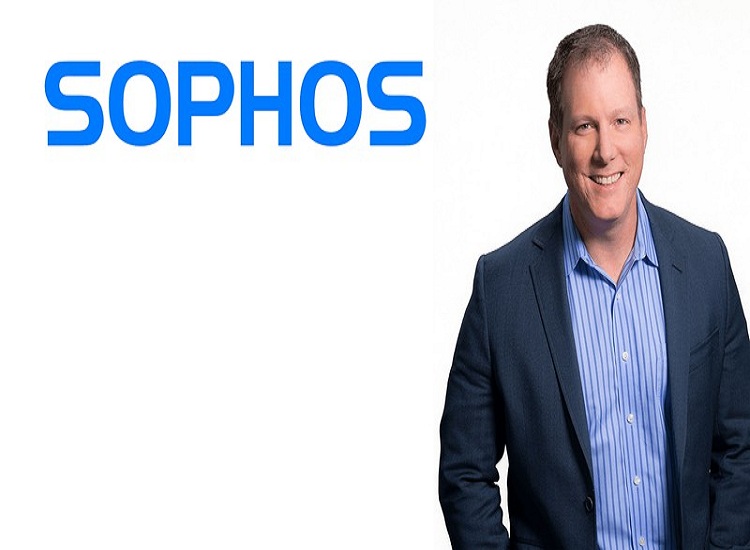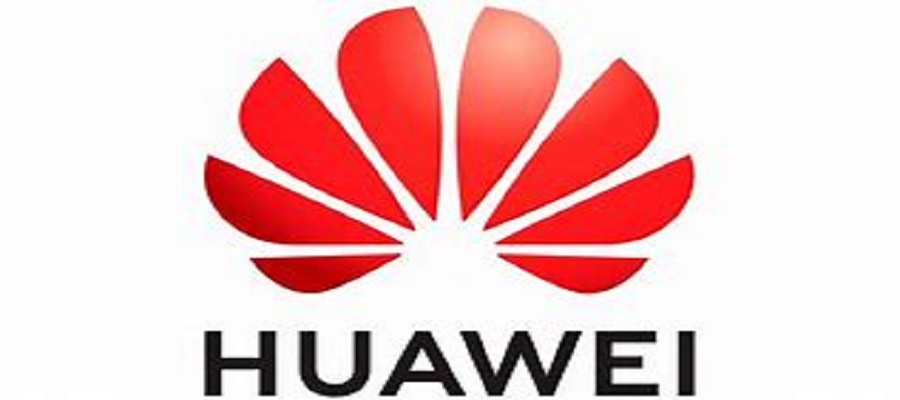E-Business
Sophos Unveils XGS Series Firewall Appliance with Industry-Best TLS Inspection

Sophos, a global leader in next-generation cybersecurity, today unveiled new XGS Series firewall appliances with unrivaled performance and advanced protection against cyberattacks. The new appliances feature industry-best Transport Layer Security (TLS) inspection, including native support for TLS 1.3, that is up to five times faster than other models available on the market today.

Dan Schiappa, chief product officer at Sophos, said, “Sophos Firewall XGS Series appliances represent the most significant hardware upgrade that we have ever released and introduce unmatched detection, protection and speed.
“Security teams can no longer afford to overlook encrypted traffic for fear of breaking something or hurting performance – there’s too much at risk.
“We’ve completely redesigned the Sophos Firewall hardware to handle the modern encrypted internet.
“Security teams now have the ability to easily inspect encrypted traffic and shine light on what was once a black hole, and they can confidently do so without compromising on performance.”
Cybercriminals Increasingly Using TLS to Avoid Detection
Sophos today also published new research, “Nearly Half of Malware Now Use TLS to Conceal Communications,” identifying a surge in cybercriminals using TLS in their attacks. The increasingly popular tactic is used by adversaries to encrypt and encapsulate the content of malicious communications to avoid detection as they carry out attacks.
In fact, 45% of malware detected by Sophos from January through March 2021 used TLS to conceal malicious communications. That’s a staggering rise from the 23% Sophos reported in early 2020.
Sophos has also seen an increase in the use of TLS to carry out ransomware attacks in the past year, particularly with manually-deployed ransomware. The majority of malicious TLS traffic that Sophos has detected includes initial-compromise malware, such as loaders, droppers and document-based installers like BazarLoader, GoDrop and ZLoader.
“TLS has undoubtably changed the privacy of internet communications for the better, but for all the good it’s done, it’s also made it much easier for attackers to download and install malicious modules and exfiltrate stolen data – right under the noses of IT security teams and most security technologies,” said Schiappa.
“Attackers are taking advantage of TLS-protected web and cloud services for malware delivery and for command and control. Their initial compromise malware is simply the advance guard for major attacks, as they’re setting up camp for the heavy artillery that follows, like ransomware.”
Accelerating Threat Protection
Powered by Sophos Firewall’s Xstream architecture, XGS Series appliances deliver the industry’s best zero-day threat protection, identifying and stopping the most advanced known and potential threats – including ransomware.
Protection is fueled by powerful threat intelligence, available only through SophosLabs Intelix and based on petabytes of SophosLabs threat data. Suspicious files are safely detonated in SophosLabs Intelix virtual environments as well as subjected to in-depth static analysis for additional detection coverage and intelligence gathering.
New Xstream flow processors within the appliances automatically accelerate trusted traffic, such as software as a service (SaaS), software-defined wide-area network (SD-WAN) and cloud applications, providing maximum headroom for traffic requiring TLS and deep packet inspection.
This greatly reduces latency and improves overall performance for important business applications, particularly those using real-time data.
The Xstream flow processors are software programmable, allowing Sophos to offload additional traffic in the future. The flexibility to enhance and adapt connectivity on the hardware itself further protects customers’ hardware investment.

Sophos provides unique and intuitive dashboard visibility of TLS traffic and inspection issues, and security administrators can add exceptions for problematic streams with one click. Performance is also optimized out of the box with an extensive set of rules that are updated and maintained by SophosLabs to exclude safe traffic from inspection.
Sophos Firewall XGS Series appliances and firmware are easily managed on the cloud-based Sophos Central platform alongside Sophos’ entire portfolio of next-generation cybersecurity solutions. Solutions share threat intelligence and automatically respond to security incidents through Sophos’ unique synchronized security approach. Integration with Sophos Managed Threat Response (MTR) further boosts protection with human analysis for 24/7 fully managed threat detection and response.
Availability
Sophos Firewall XGS Series desktop and most 1U rackmount appliances are available for immediate purchase exclusively through Sophos’ global channel of partners and managed service providers (MSPs). These models are ideally suited for small, medium and distributed organizations as an all-in-one network security solution with a strong price to performance ratio and diverse add-on connectivity options.
Additional models designed for enterprise edge environments requiring maximum throughput for more complex network configurations will be available in the coming weeks. Simplified licensing includes bundled protection with enhanced support.
What Analysts and Channel Partners Say
“Firewall appliances are evolving to secure newer use cases, including cloud and the sudden shift to a growing remote workforce,” said Frank Dickson, program vice president at IDC. “The elegance of Sophos Firewall’s Xstream dual processor architecture approach is its ability to accelerate trusted traffic from so-called ‘elephant flows’— large media streams, VoIP traffic and even cloud applications — to then leverage the general purpose CPU to perform appropriate resource-intensive processes, such as deep packet inspection and TLS inspection. The result is an adaptable network appliance designed to provide protection while meeting changing and accelerating business demands across a variety of use cases.”
“The new XGS Series firewall appliances are screaming fast with rock solid, unbreakable stability. We captured an immediate increase in performance that doubled our throughput, which completely blew us away. Sophos Firewall has always been industry best, but the XGS Series appliances are revolutionary and beyond compare with cutting-edge innovation that’s years ahead of other offerings,” said Sam Heard, president at Data Integrity Services.
“Sophos Firewall provides the protection our customers need as they increasingly move business critical applications to the cloud and adopt zero trust technologies. It’s a win-win for channel partners, who further benefit with tremendous growth opportunities to cross and up-sell across the entire suite of Sophos solutions and services.”
“Sophos is raising the bar and pushing the cybersecurity industry forward at warp speed with its new XGS Series appliances, which are nothing short of amazing,” said Karen Greer, CEO at Secure Content Technologies.
“Appliance installation is incredibly simple, and within minutes I could hear our technician yelling through the wall, ‘wow, this is fast!’ Sophos Firewall is effortlessly managed on Sophos Central, making it exponentially easier to secure and manage diverse and complex customer environments.
“Knowing that Sophos Firewall automatically shares threat intelligence with other solutions on the platform through Sophos’ synchronized security heartbeat feature is game changing, giving us complete confidence and peace of mind that our customers are protected – even the most evasive threats don’t stand a chance at getting by.”
E-Business
Huawei Unveils AI Computing System to Challenge Nvidia’s Flagship Product

China’s Huawei Technologies unveiled an AI computing system on Saturday that an industry expert said rivals Nvidia’s most advanced product, as the company aims to expand its footprint in the country’s booming AI sector.

The CloudMatrix 384 system made its public debut at the World Artificial Intelligence Conference (WAIC), a three-day event in Shanghai, attracting a large crowd to Huawei’s booth with its showcase of cutting-edge AI innovations.
The system has attracted significant interest from the global AI community since Huawei (HWT.UL) first introduced it in April. Industry analysts see it as a direct challenger to Nvidia’s GB200 NVL72, the most advanced system-level offering currently available from the U.S. chipmaker.
In an April article, Dylan Patel, founder of semiconductor research firm SemiAnalysis, stated that Huawei now possesses AI system capabilities that could surpass those of Nvidia.
Huawei staff at its WAIC booth declined to comment when asked to introduce the CloudMatrix 384 system.
A spokesperson for Huawei did not respond to questions.
Huawei has become widely regarded as China’s most promising domestic supplier of chips essential for AI development, even though the company faces U.S. export restrictions.
Nvidia CEO, Jensen Huang told Bloomberg in May that Huawei had been “moving quite fast” and named the CloudMatrix as an example.
The CloudMatrix 384 system features 384 of Huawei’s latest 910C chips and, according to SemiAnalysis, surpasses Nvidia’s GB200 NVL72 in certain performance metrics, despite the latter using 72 B200 chips.
SemiAnalysis attributes this performance advantage to Huawei’s strong system design, which offsets the lower power of individual chips by leveraging a greater number of them and incorporating system-level innovations.
Huawei describes the system as utilizing a “supernode” architecture that enables ultra-high-speed interconnectivity between chips.
In June, Zhang Pingan, CEO, Huawei Cloud confirmed that the CloudMatrix 384 was already operational on Huawei’s cloud platform.
E-Business
Transcorp Hotels Delivers Stellar H1 Results, Declares Over ₦1Bn Dividend

Transcorp Hotels Plc has delivered a stellar performance in the first half of 2025, recording a 60% year-on-year surge in revenue to ₦47.57 billion, up from ₦29.72 billion in H1 2024. Gross profit climbed 71% to ₦36.21 billion, maintaining a strong 76% margin despite inflation and operational headwinds.

The hospitality giant, a subsidiary of Transnational Corporation Plc, also announced an interim dividend payout of ₦1.024 billion — offering ₦0.10 per 50 kobo ordinary share to shareholders.
In a bold move, the company unveiled Nigeria’s largest corporate venue — the 5,000-seat Transcorp Centre — staking its claim as the new leader in event hospitality. Chairman Emmanuel Nnorom described the results as proof of Transcorp Hotels’ transformative strategies and unwavering investor commitment. MD/CEO Uzo Oshogwe attributed the success to relentless execution and a resilient business model.
Transcorp Hotels, renowned for iconic assets like Transcorp Hilton Abuja and its digital platform Aura, says it isn’t just leading Nigeria’s hospitality sector — it’s redefining excellence across Africa.
E-Business
Microsoft Servers Hacked by Chinese Groups

Chinese “threat actors” have hacked Microsoft’s SharePoint document software servers and targeted the data of the businesses using it, the firm has said.

China state-backed Linen Typhoon and Violet Typhoon as well as China-based Storm-2603 were said to have “exploited vulnerabilities” in on-premises SharePoint servers, the kind used by firms, but not in its cloud-based service.
The US tech giant has released security updates in response and has advised all on-premises SharePoint server customers to install them.
“Investigations into other actors also using these exploits are still ongoing,” Microsoft said in a statement.
The firm said it had “high confidence” the hackers would continue to target systems which have not installed its security updates.
It added that it would update its website blog with more information as its investigation continues.
Microsoft said it had observed attacks in which hackers had sent a request to a SharePoint server “enabling the theft of the key material by threat actors”.
Charles Carmakal, chief technology officer at Mandiant Consulting firm, a division of Google Cloud, told reporter, it was “aware of several victims in several different sectors across a number of global geographies”.
Carmakal said it appeared that governments and businesses that use SharePoint on their sites were the primary target.
A number of adversaries who stole material encoded by cryptography were then able to regain ongoing access to the victims’ SharePoint data, he said.
“This was exploited in a very broad way, very opportunistically before a patch was made available. That’s why this is significant,” Carmakal said.
Carmakal said the “China-nexus actor” was deploying techniques similar to previous campaigns associated with Beijing.
Microsoft said Linen Typhoon had “focused on stealing intellectual property, primarily targeting organizations related to government, defence, strategic planning, and human rights” for 13 years.
It added that Violet Typhoon had been “dedicated to espionage”, primarily targeting former government and military staff, non-governmental organizations, think tanks, higher education, the media, the financial sector and the health sector in the US, Europe, and East Asia.
Meanwhile, Storm-2603 was “assessed with medium confidence to be a China-based threat actor”.

 General News2 days ago
General News2 days agoFG Plans N50m STEEM Grant to Support Student Innovation in August

 E-Business2 days ago
E-Business2 days agoTranscorp Hotels Delivers Stellar H1 Results, Declares Over ₦1Bn Dividend

 Telecom2 days ago
Telecom2 days agoMTN Media Innovation Programme Fellows Gain Insight into Nigeria’s Connectivity Backbone

 E-Financial2 days ago
E-Financial2 days agoCardoso, CBN Boss Risks Arrest over Alleged N5.2 Trillion Unremitted Funds

 General News2 days ago
General News2 days agoExperts Champion Sustainability at Lagos Green Economy Forum

 General News2 days ago
General News2 days agoUK Businesses Look to Africa As Strategic Growth Partners

 Telecom2 days ago
Telecom2 days agoDriving Digital Inclusion: Anambra’s Mobile Tech Hub Brings Free WiFi to the People

 Broadcasting2 days ago
Broadcasting2 days agoNDPC Hides MultiChoice Privacy Violation Details Despite FOI Request- FIJ



























